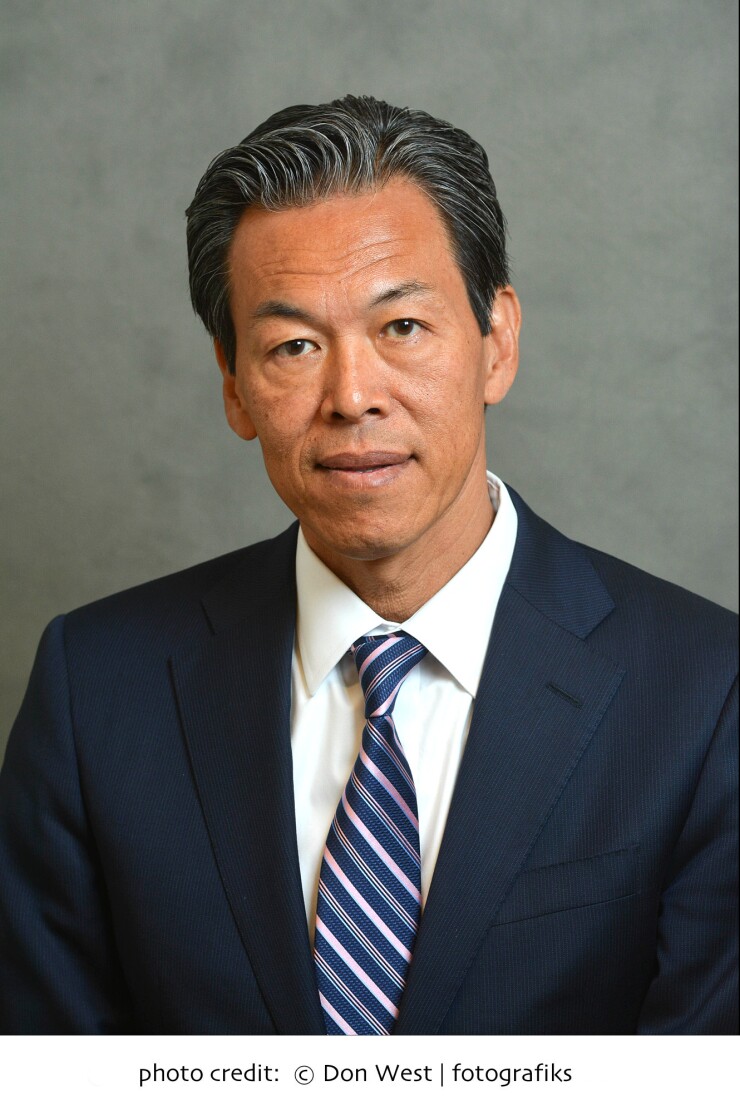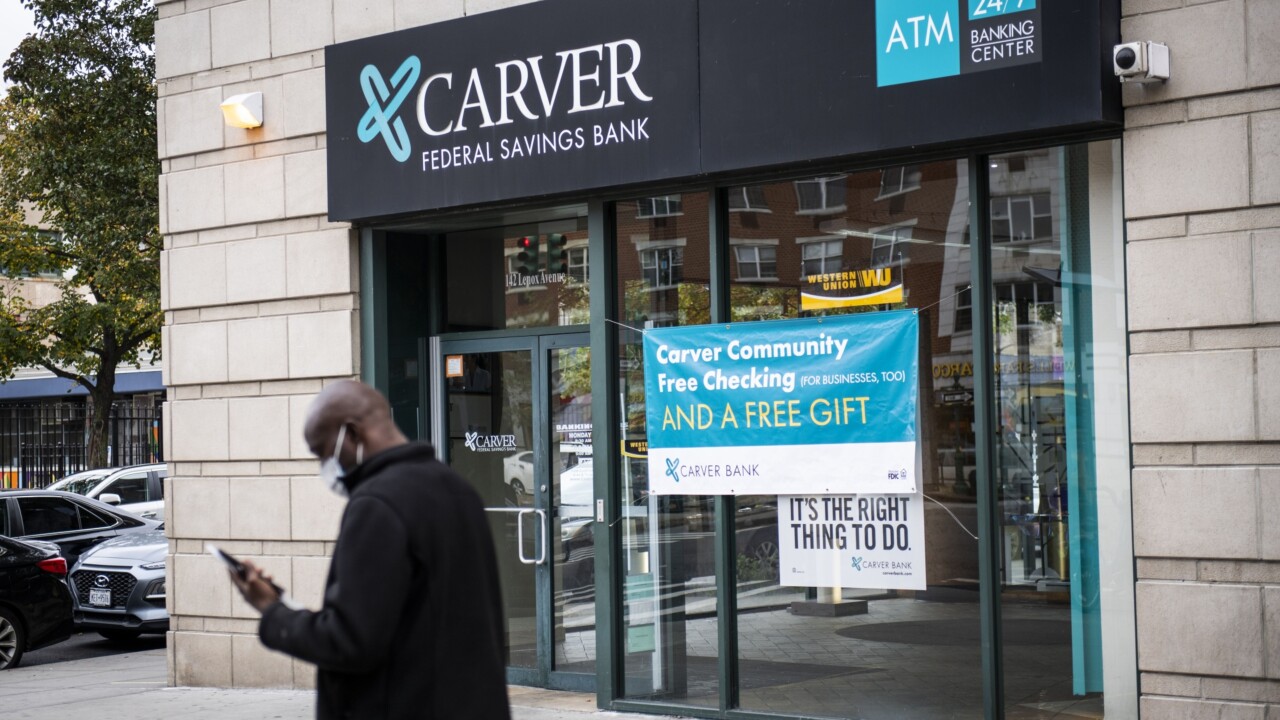Bank of America is rethinking branches from the ground up.
As consumers grow ever more accustomed to depositing and moving money, seeking credit and performing other basic functions electronically, financial institutions are grappling with the question of what to do with their branches. Over the last several years, large banks have sold branches, closed others and exited entire regions.
Bank of America's latest attempt to figure out how to maintain a physical presence in an increasingly digital world is a bit counterintuitive. It plans to open hundreds of new outposts over the next several years.
Earlier this year the $2.2 trillion-asset bank began testing three so-called automated branches — new retail centers that are something less than full-fledged financial centers but rather more than ATM vestibules.
Each automated branch is equipped with an ATM, and each also offers one or two videoconference rooms, where customers can have private, Skype-style meetings with mortgage-loan officers and other specialists.
Two of these virtual centers — as the bank prefers to call them — are located in Denver, one in Minneapolis. The new branch concept is part of a larger strategy to overhaul the bank's existing retail network. It is planning to invest more in its specialists, replace every one of its 16,000 ATMs with next-generation machines and make its user experience seamless across channels.
It is nothing less than a reinvention of the role of Bank of America's retail network.
Reasons for a revamp
The transformation reflects a new understanding of the way customers are using branches today. Although retail centers are still an important source of revenue and new customers for most financial institutions, their relevance for everyday transactions has been on the decline for years, said Charles Liu, Bank of America's chief of branch transformation, ATM innovation and market strategy, who masterminded the virtual centers.
Five years ago, 65% of customers' deposits were made at the teller window and 35% at the ATM,
Among millennials, the numbers paint an even starker picture. Today 61% of Bank of America's millennial customers use ATMs to withdraw cash. Only 15% take out cash at the teller window.
The largest banks have spent the last several years tinkering with their branch networks as they seek to redefine themselves post-crisis, cut their expenses in a tough earnings environment and react to changing customer habits. Bank of America has shed nearly a quarter of its

Wells Fargo, whose retail network has about 1,000 branches more than that of any other U.S. bank,
During its annual investor day last month, Thasunda Brown Duckett, the CEO of consumer banking at JPMorgan Chase, noted that 70% of the 400 million transactions completed through its tellers last year could have been completed using its mobile app or another self-service channel.
"In the year ahead, you're going to continue to see us focus on migrating more of these transactions to digital," Brown Duckett said, adding that the company
The move toward fewer branches and more self-service options doesn't mean the branch is doomed.
"Even in this day and age of digital channels, the vast majority of new accounts are opened — and, in the most cases, complex problems are still solved — in the branch, face-to-face," said Raja Bose, vice president of global advisory services at Diebold Nixdorf.
But
Liu's superiors asked him what needed to be done to transform existing centers into client destinations now and in the future. Most of them are the result of many acquisitions and mergers over the years. Some are old and need refurbishing, he said. Many of them put bankers' desks out on the lobby floor, which detracts from "a real sense of privacy and professionalism."
As a result, the bank is retooling its branches to reduce the number of teller windows — some centers have as many as 25 — and place a greater emphasis on closed-door meetings.
The revamp encompasses Bank of America's entire retail network. This year it plans to renovate at least 250 of its traditional branches. From there, it will ramp up the number of renovations each year while continuing to build new branches.
But the renovations will not be uniform. "We're customizing each center to tailor it to the needs of the local community," said Liu.
That means turning what was once a cookie-cutter branch into, say, a small-business center or a center that specializes in mortgage lending — depending on the needs of people nearby. Branches on university campuses will feature schools' colors and logos and will be staffed with people who understand the needs of students. The bank has 19 such student centers so far, and Liu said it is on its way to opening another 144 of them.
"Not every branch is created equal," he said. "We've got 4,600 financial centers out there. We can't just treat every single one of those centers exactly the same."
Virtual centers
Bank of America's new virtual centers are an even more radical departure from the traditional bank branch.

They are brand-new retail centers that won't have any human staffers present but which will enable human interactions when necessary. Along with an ATM, their main feature is one or more offices set up for videoconferencing. Customers unlock the rooms with their debit cards or smartphones, and find themselves talking first to an everyday banker who will either help them directly or get somebody on the line who can. Thanks to dual screens, the customer is able to see — and converse with — both Bank of America staffers simultaneously.
Averaging about 1,000 square feet — one-quarter the size of a traditional branch, or even less — these centers are intended not as replacements but as supplements to full-scale branches. Bank of America is piloting them in Denver and Minneapolis, its two newest retail markets, where it is not beholden to a large existing retail network and the legacy expectations that would come with it. The customer feedback it gets in these markets will inform the rollout later this year of dozens more.
In the future, the bank intends to set up interactive kiosks inside the virtual centers to educate visitors on how to use them. The bank is even thinking about installing monitors with "virtual greeters" — live people who will materialize onscreen to provide assistance — in the lobbies.
The virtual centers make perfect sense in the context of Bank of America's overall strategy, said David Albertazzi, a senior analyst at Aite Group. He draws a straight line from them to what he sees as their predecessor — the bank's technology-driven express banking centers, of which it now has more than 200. Those centers, opened in select metropolitan areas such as New York, Boston and Atlanta, feature ATMs with remote video as well as "universal bankers" who roam the lobby with tablets to assist customers.
Even the videoconference rooms are not exclusive to Bank of America's new virtual centers. More than 700 branches are now equipped with remote-video capability.
"Consumers continue to warm to the idea of speaking to someone on video" rather than in person, said Bose. "Absolutely it is worth testing that out."
But the virtual centers are unique in being completely unstaffed. Bank of America plans to open 25 more of them this year — some in markets where the bank has a longstanding retail presence. Within three to four years, the number of virtual centers should "easily" have grown to 300, Liu said.
Banks tend not to disclose detailed breakdowns of the costs associated with their branch networks, but the generally accepted assumption is that each branch costs between $1 million to $2 million to operate annually, depending on its size and location, said Brian Kleinhanzl, an analyst at Keefe, Bruyette & Woods.
Virtual centers like the type that Bank of America is piloting may reduce costs by as much as 75%, he estimates. That kind of cost savings would be enticing for any bank looking to boost its bottom line, but Kleinhanzl said the real test of such branches will be their effect on revenue.
"You know there is expense savings. That's a given," Kleinhanzl said. "But what you don't know is the effect on the ability to gather deposits and other revenue that can be generated."
Albertazzi said he expects Bank of America to continue closing some of its larger transaction centers even as it opens new automated branches, so it is unclear whether the bank’s overall retail network is destined to grow or shrink in the next half decade.
Either way, if all goes according to plan, the vast majority of Bank of America's retail network will have been transformed.
'Where the physical and the digital meet'
Bank of America is under no illusions that the migration to online and mobile banking can be reversed — nor does the bank wish to reverse it. In the fourth quarter of 2016, customers logged into its mobile app 970 million times. They accessed it a total of 3.8 billion times throughout the year — and that number is growing substantially year over year, said Moore. They are now banking more on mobile devices than on desktop computers and more than they are calling in or visiting retail centers.
Rather, Liu and Moore envision closer integration between all banking channels, with branches as hubs — places where you can find get expert help and complete simple transactions begun on your smartphone. Increasingly, the brick-and-mortar branch is "a place where the physical and the digital channels meet," said Jose Resendiz, the vice president of financial services at NCR Corp.
To that end, said Moore, "we are investing in our specialists — our small-business bankers, our mortgage-loan officers, our financial solutions advisers, our relationship managers — and the traffic to those folks is actually increasing while the basic, simple-service transactions are declining."

Along with videoconference rooms, one site of this digital-physical conjunction is the ATM. Bank of America is set to debut this summer a next-generation machine that it calls a "digital concierge," which will allow customers to initiate a cash withdrawal or deposit using their mobile app — and then complete the transaction almost instantly upon arriving at the ATM. Customers' smartphones will even serve to access the machine.
Besides dispensing cash, the new ATMs will be able to cash checks, process credit card payments, and schedule appointments with financial specialists. They will become the new standard at Bank of America branches, eventually replacing every one of the bank's 16,000 old-style machines.
"We are making sure that all the simple-service transactions that customers can do, they can do in the comfort of any location they want — their home, the ATM, wherever," Moore said.
While Moore's goal with the mobile app is to "deliver the entire bank at the touch of a thumb," she recognizes the continuing value of the bank's retail presence. Customers make one million visits a week to Bank of America's financial centers, she noted.
Bose said that Bank of America and other institutions today are towing a "thin line" — wanting to reduce branches in order to cut costs while recognizing that most of their sales still originate there.
Moreover, he added, despite banks' big investments in digital technology, they still believe in the value of creating a personal connection with their customers.
"The vast majority of bankers I talk to say they do not want to abandon the human element of banking,” Bose said. "And that human element to this day is still delivered in the bank branch."
Robert Barba contributed to this article.





